When Building A Keyword List For A Display Network Campaign You Should Do Which Of The Following
Unless you've been living under a rock for the last twenty years, you've seen all types of Google Ads without even realizing it. Perhaps you saw a promotion of a fasting app when reading about weight loss. Or maybe you were looking for sneakers, and a discount on Google search results led you to buy a pair. These were Google Ads!
While Google Ads may look a little complicated at first, like all seemingly difficult things, Google advertising gets much easier once you break the process step by step. In this article, we're doing exactly that.
Our Google Ads 101 will explain:
- Main Google Ads terms
- Different types of Google Ads
- How to use different ad formats to boost sales
All in easy-to-understand language.
Let's get into it!
How many types of Google ads are there?
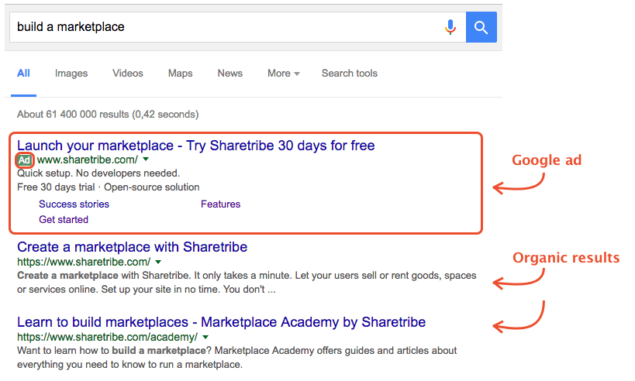
There are 8 different types of ad campaigns with Google Ads:
- Search – Text ads on Google search results
- Display – Image ads on websites or on Gmail
- Video – Video ads on YouTube
- Shopping – Product listings on Google
- App – Your app promotion on many channels
- Smart – Simplified automated ads on Google and across the web
- Local – Drive customers to a physical location
- Discovery – Runs ads across Google's feeds when they're open
In this article, we'll discuss the most important campaigns: search, display, shopping, video, and app. We recommend starting with them, and, later, if you see the need, you can also try adding more campaigns, such as discovery ads.
Google Ads: main terms you need to know
Before we get into the types of Google Ads and their best practices, let's quickly go over the main terms you need to know to understand how Google advertising works.
Google Ads
Formerly known as Google AdWords, Google Ads is an advertising service created by Google that lets people advertise their businesses with ads on Google search results and its network. It's a pay-per-click (PPC) advertising solution where advertisers pay per click or impression on an ad.
Bidding
Google ads work like an auction. If you want to advertise on Google, you need to select a maximum amount of money (your bid) that you're willing to pay for a specific action on your ad. Naturally, higher bids get better ad placements.
- CPC (cost-per-click) – The amount you pay for a click on your ad.
- CPM (cost per mille) – The amount you pay for 1,000 impressions of your ad (times your ad is shown to people).
Ad campaign
A set of ads that have the same budget, location targeting, and other settings.
Keywords
Words or phrases that describe your product or service. Keywords determine when and where your ads can appear, so choose such keywords that best match your ideal customers' search intent.
Conversion
When a user performs your wanted action (makes a purchase, signs up to your newsletter, etc.).
As you'll start running your first ad campaigns, you'll learn more terms, but for now, these will be sufficient to follow this article.
Types of Google Ad campaigns & their best practices
Now that you're familiar with Google Ads basics let's dive into the five Google ads campaign types and see how you can use them to advertise your business.
1. Google search ads – attract people looking for your products
Google search ads are text ads that you see on Google search engine results pages (SERPs). Your search ads can appear either at the top above the organic search results or at the very bottom of the page.
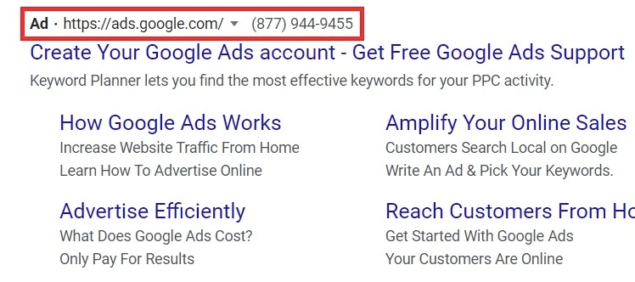
Best used for: Getting in front of people who are ready to buy.
By targeting keywords with buyer's intent, you can reach shoppers when they're searching for the products and services that you offer. For example, if you're selling dog beds on your Shopify store, target keywords like "dog beds cheap," and you'll attract people who are looking to buy a dog bed.
Whether your ad campaign is displayed on the top or the bottom of the SERPs depends on your bid price. The more you bid, the better visibility you get.
Best practices of Google search ads
Here's the list of best practices for Google search ads that will help you bring more sales.
- Write compelling ad copy
Remember, search ads are text ads, there are no visuals attached, so their effectiveness depends on how well you write them.
Your ad copy should be focused not on the features of your products but on user benefits. Appeal to your potential buyer's needs and emotions.
Also, your ad space is limited – make sure you mention the most important thing(s) concisely. Avoid generic phrases and use specific calls-to-action.
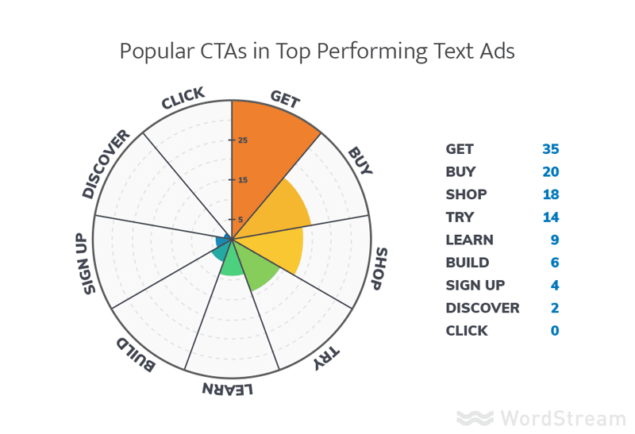
Check our listicle on 50 Powerful Call to Action Phrases for inspiration.
- Create branded search campaigns
It's highly recommended to bid on your branded terms, especially if your business is new and you're not ranking organically yet. This way, you can ensure your potential customers will easily find you if they want to check you out.
And, even if you already rank on Google organically, it's still beneficial to run a branded search ad. Grammarly does it even though it's a strong, well-established brand.
By bidding on your brand name, you're taking much more space on the SERPs and increase your chances of getting traffic. Be smart, be like Grammarly!
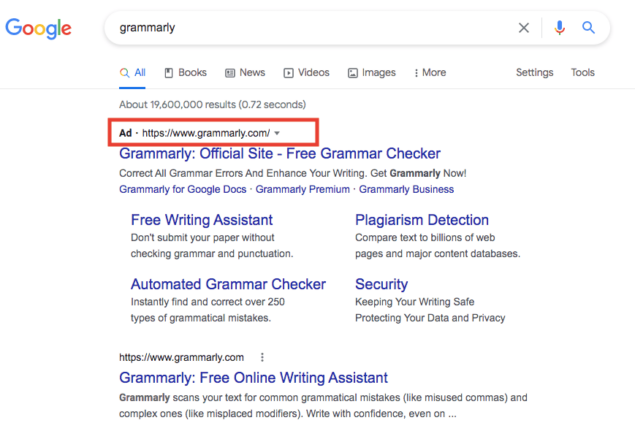
Running a branded search campaign can also help you discover different variations in how your audience is looking for you on Google. You may come across misspellings or long-tail keyword variations, such as "Grammarly for technical writing," that can give you ideas on how to market yourself.
- Run competitor search campaigns
Another way to use text ads is to target your competitors' branded terms.
Don't feel bad for doing it – it's a very common practice. Chances are people searching for your competitors will be interested in your products, too, so take this opportunity to increase your sales. Plus, if you're already popular in your niche, it's very likely your competitors are already bidding on your branded terms.
- Create Dynamic search ads
According to Google, 15% of searches on Google are brand new every day. While this gives savvy marketers more ways to get in front of their target audience, it also makes it harder to keep up with all the relevant keywords for your brand.
To save time and make managing keyword lists easier, run dynamic search ads. They offer the easiest way to reach people who are searching for your products and services on Google.
Dynamic search ads use the content from your online store to target your ads.
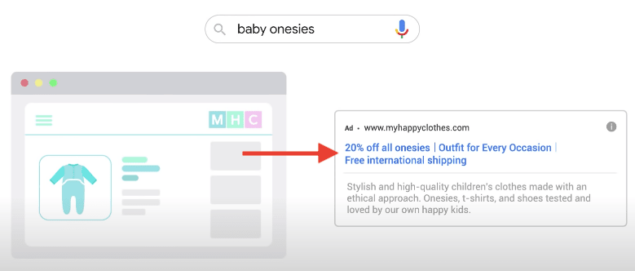
With Dynamic search ads, you don't need to manage exhausting keyword lists, and you can also fill in the missing gaps of your usual keyword-based campaigns.
There are a few things to keep in mind:
- Dynamic search ads won't work very well if your website changes very often (e.g., you update it with daily deals).
- Dynamic search ads work best for websites with a clear structure. Make sure your HTML titles and other parts of your web content are well-thought-out since Google will use them to create headlines for your ads and match with searchers' queries.
- Your product pages and homepage must be optimized to help Google identify themes and terms on your website. If your online store has a lot of Flash content, or if people need to sign in to see your site's content, you won't be able to run successful Dynamic search ads.
- Check if your website is accessible by Googlebot. In other words, make sure Google can see the content on your website. Go to www.google.com, enter your page's URL, and check if it's there. See the example below:
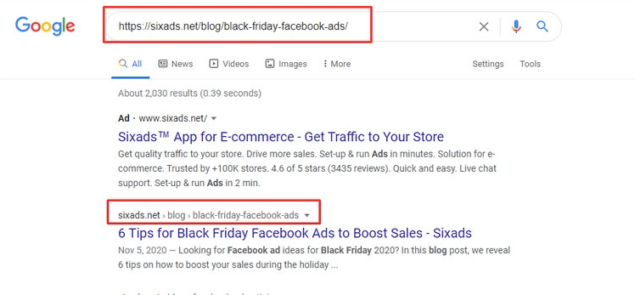
- Create Responsive search ads
While they may sound similar, responsive search ads are different from dynamic search ads.
With dynamic ads, the content is pulled from your website and automatically adjusted to create your ads.
Whereas, with responsive ads, the advertiser needs to prepare a list of multiple ad headlines and descriptions for the same ad. Then, Google Ads automatically mixes and matches them to find the best performing combinations.
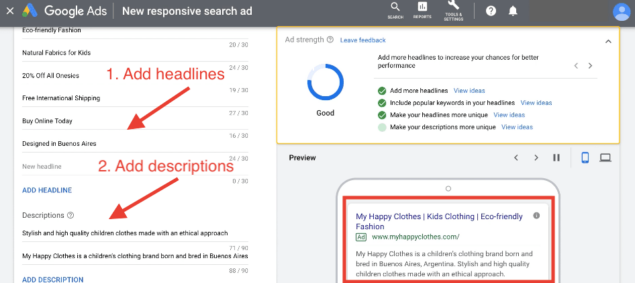
Responsive search ads let you find the best way to match user's search intent and improve your campaign's performance. They also allow you to tailor your ad text based on your customers' locations and help you reach more people.
2. Display ads – generate brand awareness
While search ads are based on text and let you target specific keywords, Display ads are image-based and allow you to target people who are likely to be interested in your products but aren't looking for them yet.
Here's an example of a display ad:

You can usually see display campaigns when you're browsing your favorite websites. However, they can also appear on your Gmail account, apps, or videos.
Best used for: Reach your potential clients early in the buying cycle and increase your brand awareness.
Display ads can help you to introduce your business to specific target audiences who are likely to be interested in what you're selling. This way, you can reach more people compared to only using search ads.
Here's another great example of a Display ad – the brand gets straight to the point:
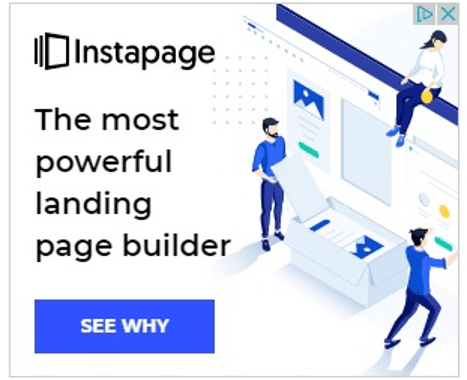
Google Display Network
To show your Display campaigns to relevant people, Google uses the Google Display Network (GDN).
It's a network of more than 2 million websites, apps, and videos where your Google Ads can appear. It lets you set where or when you want your ads to be shown based on features of your ideal audience, such as their age, gender, or interests.
With Google Display Network, you can reach more than 90% of internet users worldwide.
Best practices of Google Display ads
Here's the list of best practices for Google Display ads that will help you raise your brand awareness and get more people into your marketing funnel.
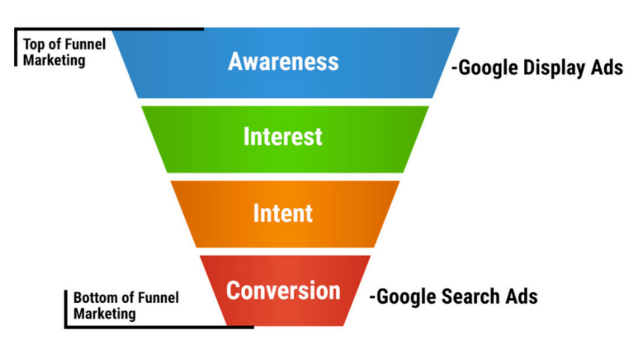
- Prioritize Responsive Display ads
You can choose between three types of display ads: responsive display ads, Gmail ads, and uploaded image ads. While all three ad formats are effective and can serve different marketing strategies, Google says that responsive display ads get the most reach of all types. That's why we recommend putting more budget into them.
Responsive display ads are automatically adjusted in appearance, size, and format so they could fit all the available placements on the Google Display Network.
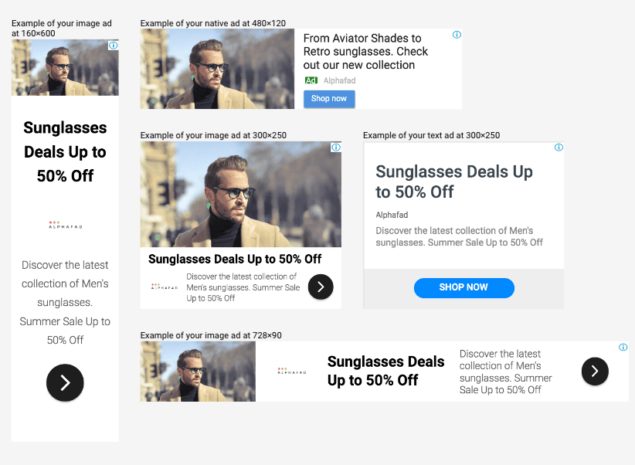
Simply upload your assets, such as images, headlines, descriptions, your logo, or videos, and Google will figure out the best combination of them and automatically generate your ads.
- Don't mix new users with remarketing audiences
Display ads allow for remarketing, which is a great way to remind your website visitors of your products. However, make sure you exclude people who have already been to your online store or watched one of your YouTube videos from your new audiences. They are already familiar with your brand and will probably need a different kind of messaging than people who have never heard of you.
- Attract people similar to your high-value visitors
You can use your remarketing audiences made from your previous visitors to expand your top-of-the-funnel audiences (those people who don't know about you yet). You can take your high-value visitors and use them to find similar people who are likely to become your customers.
To do it, use a targeting option called "Similar Audiences." It allows you to get in front of potential customers who have similar web behavior as people from your remarketing campaign.
3. Video ads – get in front of targeted audience
Since YouTube belongs to Google and also acts like a search engine–only for videos–you can target your potential customers on YouTube based on what they are watching. And with over 2 billion users worldwide, you have quite an audience to target!
Your video ad campaigns are placed before, during, or after YouTube videos and in the search results.
Here's an example of a video game ad that pops up before another video:
Best used for: getting your product or service in front of a relevant audience.
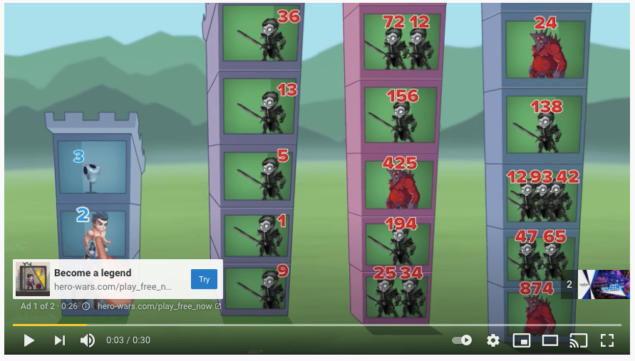
With video ads, you can use demographic targeting and reach your ideal audiences based on age, gender, and interests.
In-stream video ads have a 5-second timer before people can switch to their intended video or watch the ad for its entire duration. You have plenty of time to get your message across in either case.
For maximum impact, use this ad format together with display advertising.
Best practices of Google Video ads
Here's the list of best practices for running Video ads in Google Ads that will help you raise your brand awareness and get more leads.
- Create narrow audiences
Remember, if you advertise to everyone, you advertise to no one. To run successful video ad campaigns, create separate video ads that target ultra-specific keywords, topics, or demographics. This way, you'll have ads that are genuinely relevant to your target audiences, and they'll be more likely to get into your marketing funnel.
- Keep your ad short
Ad play rates drop off significantly after 45 seconds, so make sure to deliver your most important messages early in the video.
- Be direct with your messaging
Because your video ad may be your only communication with YouTube viewers, be direct about what your business offers. Provide your target audience with clear next steps to take after watching the video. For example, you could encourage them to make a purchase or visit your website for more information.
- Use advanced campaign settings
Optimize your video ads with advanced campaign settings. For example, you can set your ads to run during certain hours or days of the week when you're most likely to reach your target audience. You can also set a frequency cap to limit the number of times your ads appear on YouTube or partners on the Google Display Network to avoid ad fatigue.
4. Shopping ads – advertise to shoppers ready to buy
Google Shopping Ads are product-based ads. They're displayed specifically for product searches on Google.
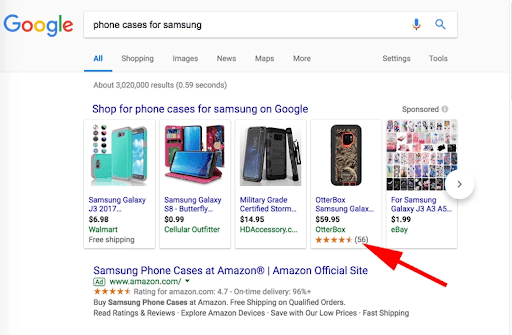
Unlike regular search ads, Shopping ads show an image of a product along with its product title, price, store name, and reviews. Essentially, they provide shoppers with important product information before they even visit an online store.
Best used for: Boost traffic to your e-commerce store and increase sales.
There are three types of Shopping campaigns:
- Product Shopping ad. These are created using the product data provided in your Google Merchant Center account.
- Showcase Shopping ad. These can be made by grouping together a variety of similar products. Customers will be able to compare a few of your products and choose the best one. This allows people to explore your inventory without even going to your store.
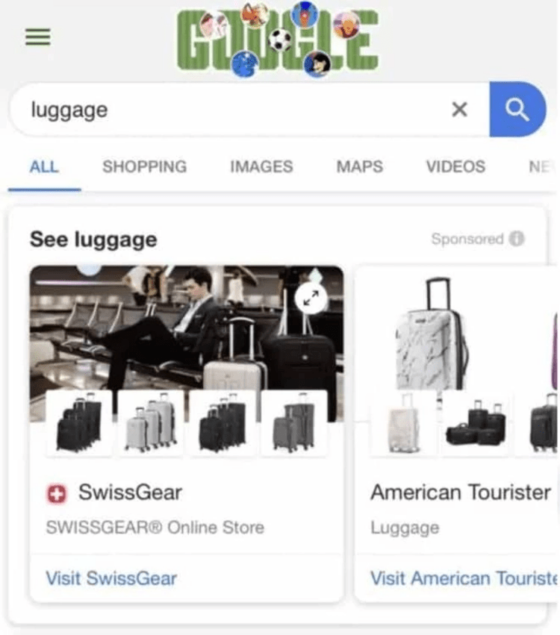
- Local Inventory Shopping ad. These ads are useful if you have a physical store. They use product feed data from your local inventory to display your products from a physical store to nearby Google shoppers.
Best practices of Google Shopping ads
Here's the list of best practices for running Google Shopping ads to boost sales.
- Your product details should be keyword-rich
Google will use your product data to determine whether your products match a search query by a potential shopper. Make sure your product titles and descriptions contain keywords that describe your products the best.
- Always double-check your product info
If your prices are not 100% accurate, Google won't show your product ads, especially if you have different international currencies. Make sure you have a foolproof process to update your product info, pricing change, and availability.
You can check your product info manually, for example, using Google spreadsheets. However, if you have a lot of products, it may be wiser to look for specialized software. This way, you'll save time and be sure that your product data feed is correct.
- Use high-quality images
Product images can be the leading factor in your ad campaign's success, so take good care of them. They should be of high quality and taken in a clear background.
Check our article on 7 Great Benefits of Google Shopping Ads for more info on how Shopping campaigns can benefit your business.
5. App Ad campaigns – increase your app installs
Have a mobile app for your business? With Google Ads, you can promote it with app campaigns across Google's largest properties, including Google Play, YouTube, Search, and the Google Display Network.
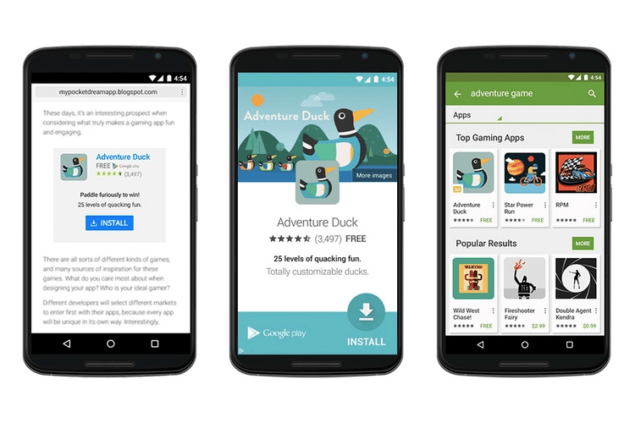
Best used for: Creating ads to promote your app install or take a specific action within it.
Unlike other ad types on Google Ads, you don't need to create individual ads for App campaigns. Instead, your ads are automatically designed for you!
Provide some text, a starting bid, and a budget, as well as the languages and locations for your campaign. You can also add some HTML5 assets if they're relevant to your business. Then, Google Ads will adapt this info for a range of ads across various formats and networks.
Best practices of Google App ad campaigns
Here's the list of best practices for running Google App campaigns to get more potential customers.
- Give Google time to optimize your ads
When your ad campaigns are not bringing you the results you were expecting, you might feel tempted to adjust the budget or stop the ad. However, don't rush into any decisions if your ads have only been running for a few days. Let Google Ads run your campaign for at least 7 days to let it optimize your ad creatives, placements, and bids before you make any decisions.
If you do need to make some changes, make sure they're small enough not to reset Google's machine learning.
- Upload diverse assets
Google recommends providing at least one landscape image, one portrait video, and one landscape video. They will then test different asset combinations and run ads that are performing the best more often.
BONUS: Discovery ad campaigns
Discovery ads is a new type of Google ads that lets you reach up to 3 billion customers across Discover, YouTube Home, and Watch Next feeds, as well as the Gmail promotions and Social tabs using a single campaign.
These ads are somewhat similar to Display ads as they allow you to tell your brand's story visually and let you target people who are likely to be interested in your products or services. Use Discovery ads to increase your brand awareness.
How to start running Google ads for my Shopify store?
If you have a Shopify store, you can go two ways: one is traditional, another one is easy. Let's quickly go over them both.
- Create your first ad campaign yourself
First things first, you need to create your ad account. Follow the instructions on this page and come back once you're done.
Have your account ready? Good! Now, let's see how to create your first campaign:
- Go to your Google Ads account.
- Click Campaigns (it's on the left-side menu).
- You'll see a plus button – click on it and select New campaign.
- Then, choose a goal for your campaign. If none of the goals fit, you can also create a campaign without it.
- Select your campaign type.
- Choose a campaign subtype if there's one.
- You'll have to select your settings, set up ad groups, and create your ads. Check this page to get instructions for each ad type.
- Run Google Ads on Autopilot
If you don't want to spend hours watching tutorials on Google advertising (or reading articles like this one), try automated Google ads!
With sixads, you simply need to select the products you want to advertise and approve personalized ad visuals, targeting, and text. Your ad setup will only take a couple of minutes. You'll save yourself lots of valuable time that you can spend scaling your business.
Key Takeaways
Congrats – you've read everything you need to know about Google Ads to run your first ad campaign! With multiple campaign types available, you should be able to choose the right ad format for your business. Here are a few key takeaways to help you create your first ad:
- Your website needs to be crawlable by Google. Your landing pages need to have proper product titles and descriptions so Googlebot could take the correct information for ad creation.
- Dynamic Search ads are a great option if you don't have a lot of time – they make managing keyword lists much easier.
- Responsive display ads get the most reach of all ad types.
- Shopping ads are effective, but they can be a bit expensive. You may need to edit them a lot before you'll find products that perform well enough that their ad costs are worth it.
- Keywords that target the bottom of your sales funnel bring the best results. For example, a keyword like "sneakers" is not a good one – it's way too broad and doesn't have a clear buyer's intent. But a keyword like "Chuck Taylor All Star 70" will get you sales as it targets people who know exactly what kind of sneakers they're looking for.
Finally, it's highly advised to use Google Analytics to see how well your ads are performing. If you don't have Google Analytics yet, or you feel completely lost when you open it, check our super easy guide on Google Analytics for Shopify stores.
FAQ
What are the main Google Ads campaign types?
You can choose from five different types of ad campaigns with Google Ads: rn
- rn t
- Search (text ads on Google search results);
- Display (image ads on websites);
- Video (video ads on YouTube);
- Shopping (product listings on Google);
- App (your app promotion on many channels).
rn t
rn t
rn t
rn t
rn
Which Google Ads type is the best?
Which type of Google Ads is the best for you depends on what you want to achieve. For example, if your goal is sales, then your best choice is either Search or Shopping campaign type as they will allow you to target people looking to buy your products or services. However, if you want to increase your brand awareness, go for Display or video ads for their visual nature and the possibility to target people based on their interests and demographic criteria.
Are Google Ads worth it?
Yes. Google is one of the most visited websites worldwide, and its ads can reach up to 90% of its users. With the right keywords and targeting, you can get in front of millions of shoppers looking for products that you have in your store.
When Building A Keyword List For A Display Network Campaign You Should Do Which Of The Following
Source: https://sixads.net/blog/types-of-google-ads/
Posted by: pruittsonsen82.blogspot.com

0 Response to "When Building A Keyword List For A Display Network Campaign You Should Do Which Of The Following"
Post a Comment